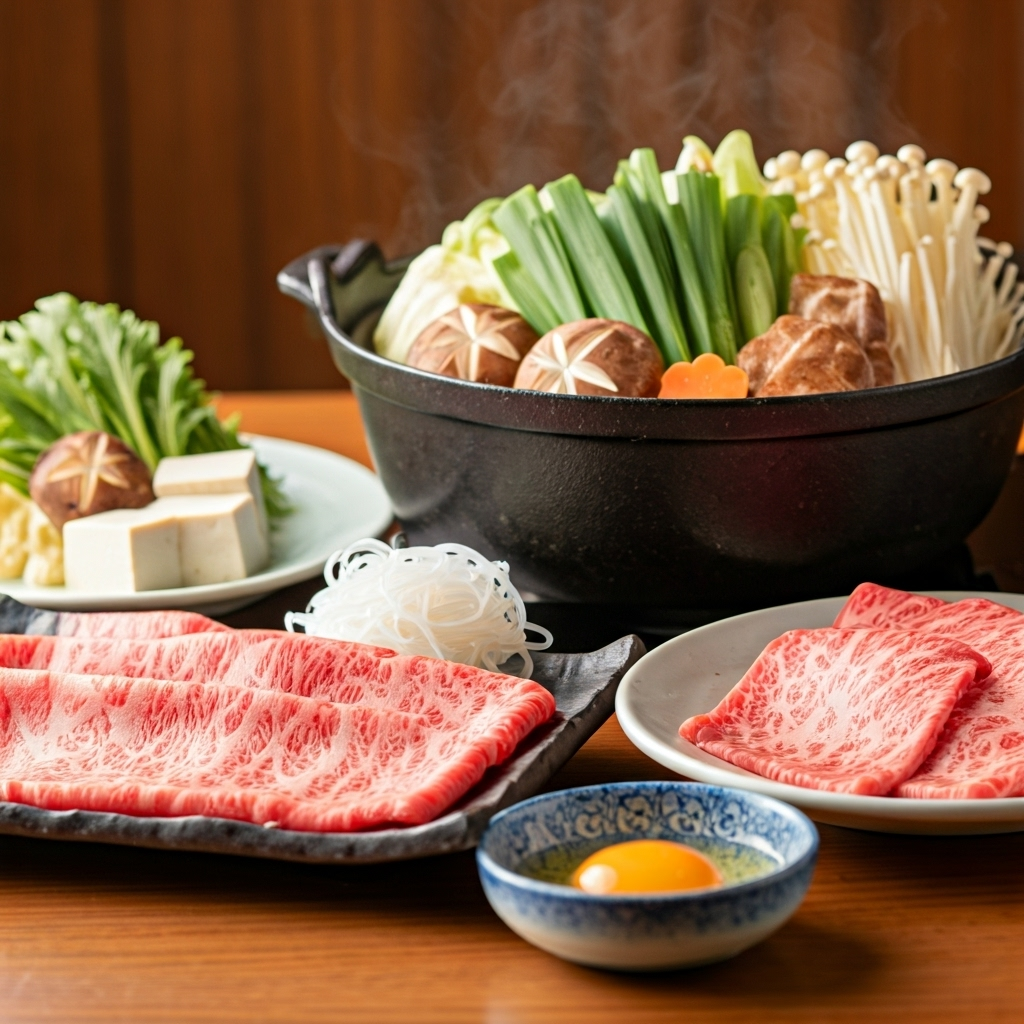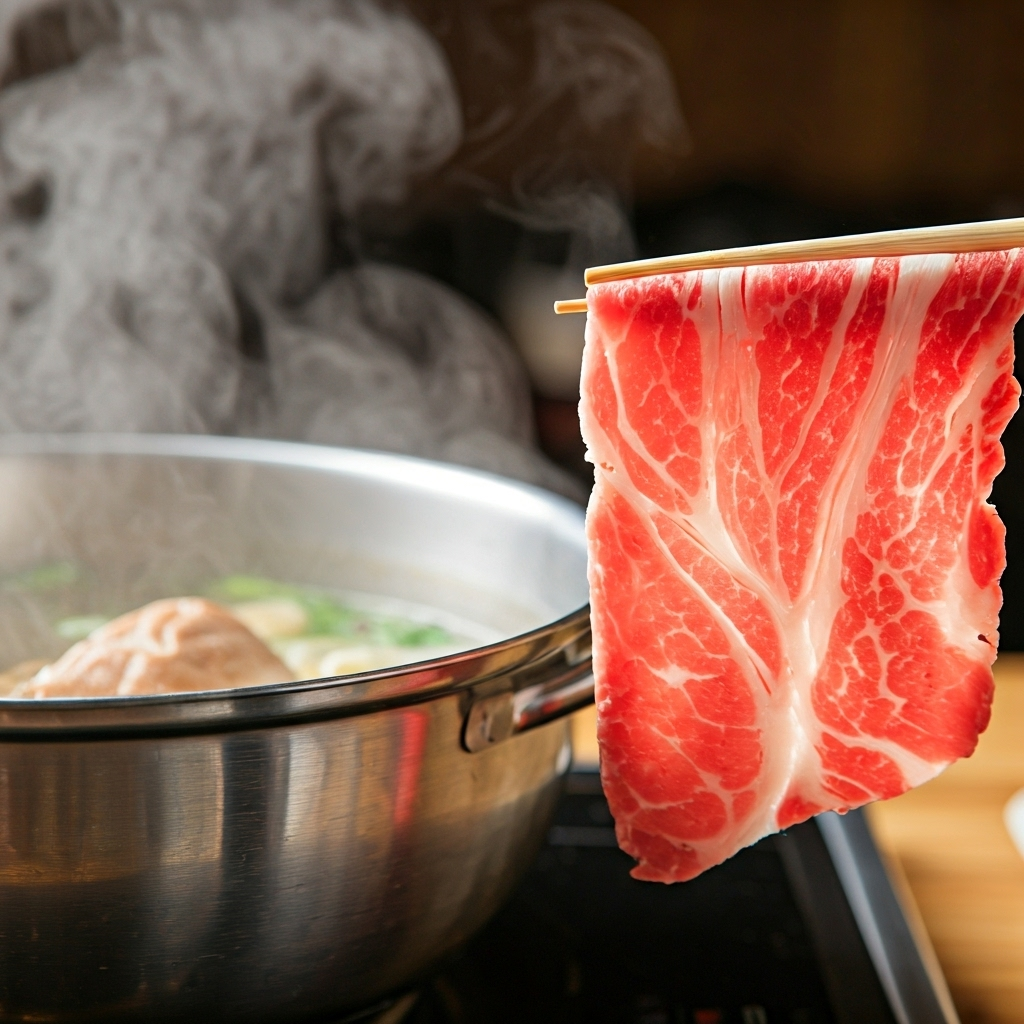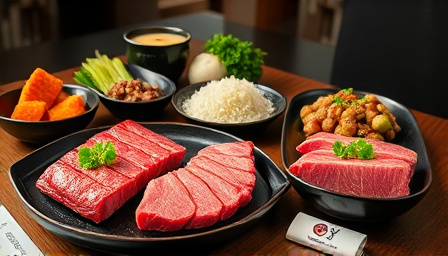The Art of Halal Shabu-shabu
Shabu-shabu, one of Japan's most beloved hot pot dishes, can be perfectly adapted for halal dining while maintaining its authentic flavors and cultural significance. This comprehensive guide will teach you how to create an exceptional halal shabu-shabu experience using premium halal Kobe beef, ensuring every element meets Islamic dietary requirements.
Understanding Halal Shabu-shabu
Traditional shabu-shabu involves cooking thinly sliced beef and vegetables in a light broth, then dipping the cooked ingredients in various sauces. The halal version maintains this essence while ensuring all ingredients, from the beef to the smallest seasoning, comply with Islamic dietary laws.
Key Halal Considerations
- Certified halal Kobe beef from approved suppliers
- Alcohol-free broth and seasonings
- Halal-certified soy sauce and miso
- Separate cooking equipment to prevent cross-contamination
- Verified halal status of all condiments and sauces
Essential Equipment and Setup
Required Equipment
- Shabu-shabu Pot: Traditional copper or stainless steel pot with divider
- Portable Gas Burner: For table-side cooking
- Ladles and Strainers: For serving and retrieving ingredients
- Individual Bowls: For broth and dipping sauces
- Chopsticks: Long cooking chopsticks and individual eating chopsticks
- Small Plates: For arranging raw ingredients
Table Setup
- Place the shabu-shabu pot in the center of the table
- Arrange raw ingredients on platters around the pot
- Provide individual bowls and chopsticks for each diner
- Set up dipping sauce stations
- Ensure adequate ventilation for the gas burner
Halal Broth Preparation
Classic Kombu Dashi (Kelp Broth)
Ingredients:
- 20g dried kombu (kelp)
- 1.5 liters filtered water
- 1 tablespoon halal-certified sake (alcohol-free) or additional water
- 1 teaspoon sea salt
Instructions:
- Wipe kombu with damp cloth to remove surface salt
- Soak kombu in cold water for 30 minutes
- Heat water slowly to just before boiling (80°C)
- Remove kombu before water boils to prevent bitterness
- Add salt and alcohol-free sake substitute
- Keep warm for serving
Rich Vegetable Broth
Ingredients:
- 1 large onion, quartered
- 2 carrots, roughly chopped
- 3 celery stalks, chopped
- 1 leek, white part only
- 5g dried shiitake mushrooms
- 10g kombu
- 2 liters water
- Salt to taste
Instructions:
- Combine all vegetables, mushrooms, and kombu in large pot
- Add water and bring to gentle simmer
- Simmer for 45 minutes, skimming foam regularly
- Strain through fine mesh, pressing vegetables gently
- Season with salt and keep warm
Chicken-Style Halal Broth
Ingredients:
- 500g halal chicken bones (optional, for richer flavor)
- 1 onion, halved
- 2 inches fresh ginger, sliced
- 3 green onions, white parts
- 10g kombu
- 2 liters water
- Salt and white pepper to taste
Instructions:
- Blanch chicken bones in boiling water for 5 minutes
- Rinse bones and place in clean pot with aromatics
- Add water and simmer gently for 2 hours
- Strain and season with salt and pepper
- Keep warm for serving
Selecting and Preparing Halal Kobe Beef
Best Cuts for Shabu-shabu
- Ribeye (リブロース): Rich marbling, tender texture
- Sirloin (サーロイン): Balanced fat and lean meat
- Chuck Eye (肩ロース): Good marbling, economical choice
- Tenderloin (ヒレ): Lean, delicate flavor
Slicing Technique
- Thickness: 2-3mm thin slices for quick cooking
- Against the Grain: Cut perpendicular to muscle fibers
- Freezing Tip: Partially freeze beef for easier slicing
- Sharp Knife: Use very sharp knife for clean cuts
- Presentation: Arrange slices on chilled plates
Halal Dipping Sauces
Ponzu-Style Citrus Sauce (Halal Version)
Ingredients:
- 60ml halal soy sauce
- 60ml fresh yuzu or lemon juice
- 30ml rice vinegar
- 1 tablespoon mirin (alcohol-free version)
- 1 piece kombu (5cm)
- 1 tablespoon grated daikon radish
- 1 green onion, finely chopped
Instructions:
- Combine soy sauce, citrus juice, vinegar, and mirin
- Add kombu and let steep for 30 minutes
- Remove kombu and add grated daikon
- Garnish with green onions before serving
Creamy Sesame Sauce
Ingredients:
- 4 tablespoons white sesame paste (tahini)
- 2 tablespoons halal soy sauce
- 1 tablespoon rice vinegar
- 1 teaspoon sugar
- 2 tablespoons warm water
- 1 clove garlic, minced
- 1 teaspoon grated fresh ginger
Instructions:
- Whisk sesame paste with warm water until smooth
- Add soy sauce, vinegar, and sugar
- Mix in garlic and ginger
- Adjust consistency with additional water if needed
Spicy Miso Sauce
Ingredients:
- 3 tablespoons halal miso paste
- 2 tablespoons halal soy sauce
- 1 tablespoon rice vinegar
- 1 teaspoon chili oil (halal-certified)
- 1 teaspoon sugar
- 2 tablespoons warm dashi or water
- 1 green onion, finely chopped
Instructions:
- Whisk miso paste with warm dashi until smooth
- Add soy sauce, vinegar, and sugar
- Stir in chili oil for heat
- Garnish with green onions
Vegetable Selection and Preparation
Essential Vegetables
- Napa Cabbage: Cut into 5cm pieces, separates leaves and stems
- Shiitake Mushrooms: Remove stems, score caps decoratively
- Enoki Mushrooms: Trim roots, separate into small bunches
- Tofu: Use firm or silken, cut into cubes
- Green Onions: Cut into 5cm diagonal pieces
- Chrysanthemum Leaves: Traditional addition, use sparingly
Optional Additions
- Udon Noodles: Fresh or dried, for finishing the meal
- Glass Noodles: Soak before adding to pot
- Corn: Fresh kernels or baby corn
- Carrots: Thinly sliced for quick cooking
- Daikon Radish: Julienned or thinly sliced
Cooking Technique and Timing
The Shabu-shabu Method
- Heat the Broth: Bring to gentle simmer, not rolling boil
- Start with Vegetables: Add longer-cooking items first
- Beef Cooking: Hold slice with chopsticks, swish 2-3 times
- Perfect Timing: Beef should be pink in center when done
- Immediate Dipping: Transfer directly to sauce
- Continuous Process: Cook and eat simultaneously
Cooking Order
- Harder vegetables (carrots, daikon) - 2-3 minutes
- Mushrooms and tofu - 1-2 minutes
- Leafy vegetables - 30 seconds to 1 minute
- Halal Kobe beef - 10-15 seconds per side
- Noodles - according to package instructions
Serving and Etiquette
Proper Serving Method
- Provide individual bowls for broth and sauces
- Use serving chopsticks for raw ingredients
- Each person cooks their own portions
- Share the cooking experience as a social activity
- Replenish broth as needed during the meal
Cultural Considerations
- Shabu-shabu is meant to be a leisurely, social meal
- Take turns cooking and sharing ingredients
- Appreciate the quality of the halal Kobe beef
- End the meal by cooking noodles in the enriched broth
- Express gratitude for the meal with "Gochisousama"
Nutritional Benefits
Halal shabu-shabu offers numerous health benefits:
- High-Quality Protein: Premium halal Kobe beef provides complete amino acids
- Low Cooking Fat: Minimal oil used in preparation
- Vegetable Rich: High vegetable content increases fiber and vitamins
- Controlled Portions: Natural portion control through cooking method
- Digestive Friendly: Light broth aids digestion
Conclusion: Mastering Halal Shabu-shabu
Creating authentic halal shabu-shabu requires attention to both Islamic dietary requirements and traditional Japanese cooking techniques. By using certified halal ingredients, particularly premium halal Kobe beef, and following proper preparation methods, you can create an exceptional dining experience that honors both culinary traditions.
The beauty of shabu-shabu lies in its simplicity and social nature. When prepared with care and quality halal ingredients, it becomes more than just a meal—it's a cultural bridge that allows Muslim diners to experience authentic Japanese cuisine while maintaining their dietary principles. Enjoy this wonderful dish with family and friends, creating memories around the shared cooking experience.



